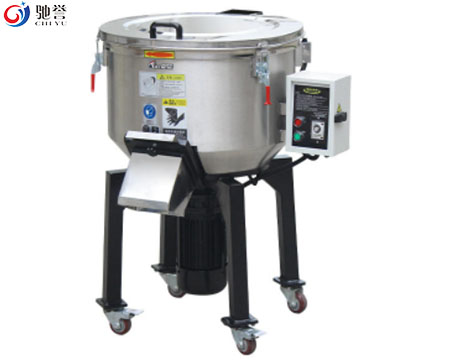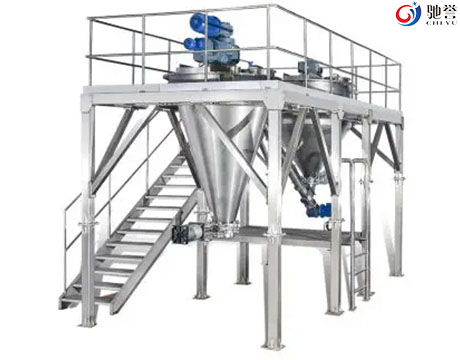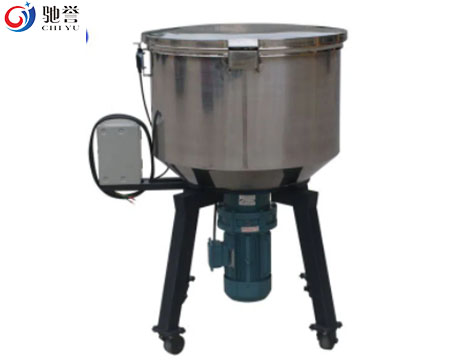Copyright © 2021 Zhangjiagang ChiYu Automation Equipment Co., Ltd. by iwonder.cn All rights reserved. Site Map
The plastics industry is a cornerstone of modern manufacturing, with a broad range of applications from packaging and automotive parts to medical devices and electronics. One of the critical processes in plastics manufacturing is mixing, which ensures that raw materials are combined in the proper proportions and uniformly to create a final product with consistent quality. Material mixer machines play a vital role in this process, facilitating the mixing of various plastic compounds before they are further processed into usable products.
In this article, we will explore the different types of material mixer machines used in the plastics industry, how they work, their applications, and the factors to consider when choosing the right mixer for specific manufacturing processes.
Material mixer machines, often referred to as plastic mixers, are industrial machines designed to blend or mix plastic materials, such as polymers, additives, fillers, colorants, and other ingredients. The aim is to achieve a homogeneous mixture with consistent quality that can be easily processed into final products like films, sheets, molded parts, or extrusion profiles.
In the context of the plastics industry, mixing is a crucial step because the physical properties, appearance, and performance of plastic products depend heavily on how well the materials are blended. A good mixing process ensures uniform distribution of additives, colorants, and fillers, improving the consistency of the final product and the efficiency of subsequent processing stages.

There are several different types of material mixer machines used in the plastics industry, each designed for specific mixing tasks. Some of the most commonly used mixers include:
1. High-Speed Mixers
High-speed mixers are widely used for the fast mixing of plastics and additives in the production of plastic compounds. These mixers are designed to operate at high speeds to efficiently blend materials, often under conditions of high shear stress. They are ideal for applications where fast turnaround times are crucial, such as in the production of color concentrates, masterbatches, and other small-batch plastic products.
Key Features:
High mixing speed for quick results
Suitable for mixing powders, pellets, and granules
Used for small to medium batches
Often equipped with a high-speed rotating blade for efficient material dispersion
2. Banbury Mixers
Banbury mixers are commonly used for compounding and blending rubber, plastics, and other polymer materials. Named after the Banbury company, these mixers are characterized by their robust design and are capable of handling tough materials with high viscosity. Banbury mixers use a pair of intermeshing rotors to shear and mix materials under high pressure and temperature, ensuring that the materials are thoroughly combined.
Key Features:
Designed for heavy-duty mixing applications
Capable of handling high-viscosity materials
Often used for blending resins, rubber, and thermoplastics
Capable of mixing large batches of materials at once
3. Ribbon Blenders
Ribbon blenders are often used for blending powdery or granular materials in a batch process. The mixer consists of a double helical ribbon agitator that rotates inside a trough, ensuring thorough mixing. The ribbon design helps move materials in both directions, ensuring a homogeneous mixture.
Key Features:
Suitable for blending dry powders, granules, and additives
Simple, reliable design
Suitable for both small and large batches
Typically used for colorant mixing and filler additions
4. Double Cone Mixers
Double cone mixers are used for mixing dry powders, granules, and pellets, typically in industries such as pharmaceuticals, food processing, and plastics. The design of the mixer consists of two cones mounted on a central axis. As the cones rotate, the materials are blended by the tumbling action inside the chamber.
Key Features:
Ideal for dry mixing of granular materials
Gentle mixing, ideal for sensitive materials
Low shear action, which minimizes degradation of delicate plastic particles
Can handle both small and large batches

5. Vertical Mixers
Vertical mixers are characterized by a vertically oriented mixing chamber and an internal agitator. These mixers are ideal for combining dry, granular, or powdered materials. The vertical mixing action helps improve the uniformity of mixing, making it suitable for high-throughput applications in large-scale plastics manufacturing.
Key Features:
Vertical orientation for improved material flow
Suitable for mixing powders and granules
Excellent for large batches or high-volume mixing
Used in applications like the production of polymer blends and masterbatches
Material mixer machines work by using different types of agitators or rotors to induce motion in the materials being mixed. These machines can be classified based on the mechanism of action and their intended application.
1. Shear Mixing
Shear mixing is a process where the material is subjected to forces that cause the particles to break apart or blend together at high speeds. This is achieved through high-speed rotating blades, such as those found in high-speed mixers and Banbury mixers. Shear mixing is often used when precise dispersion of additives like colorants, fillers, or stabilizers is required.
2. Tumbling and Convection Mixing
Tumbling mixers, such as double cone mixers, rely on the tumbling action of the materials inside a rotating drum or chamber. This motion is typically gentle and does not cause significant shear forces, making it suitable for sensitive materials. Convection mixing occurs when the materials are moved in a convective pattern within the mixing chamber, enhancing homogeneity.
3. Fluidized Bed Mixing
Some advanced material mixers use a fluidized bed technique where materials are made to behave like a fluid by introducing air or gas. This technique is often used for fine powders and highly reactive materials, where traditional mechanical mixing would be less effective.
Material mixers are used in various stages of plastic production, from compounding and blending to masterbatch production and product formulation. Some of the key applications of material mixers include:
1. Compounding and Polymer Blending
In the compounding stage, raw plastic resins are mixed with additives like stabilizers, colorants, flame retardants, and fillers. The goal is to achieve a uniform mixture of materials that can be processed into molded, extruded, or blown products. Material mixers play a critical role in ensuring that these materials are thoroughly combined to achieve the desired physical properties.
2. Masterbatch Production
Masterbatches are concentrated mixtures of additives and pigments used to color and modify plastic materials. Material mixer machines are used to create these concentrated mixtures, which are then diluted and blended with base resins during the production process. The uniformity of the masterbatch is crucial to ensuring that the final plastic product has consistent color and performance.
3. Additive Blending
Plastics often require the addition of various chemicals to improve their performance. These can include antioxidants, UV stabilizers, plasticizers, flame retardants, and impact modifiers. Material mixers are used to ensure that these additives are evenly distributed throughout the base plastic to achieve consistent material properties.
4. Colorant Dispersion
Colorants are frequently added to plastics to give them specific hues or to make them more attractive for consumer products. Material mixer machines, particularly high-speed mixers, are often used to evenly distribute the colorant throughout the polymer matrix, ensuring that the final plastic product has the desired color and appearance.

When selecting a material mixer machine for the plastics industry, several factors must be considered to ensure optimal performance and efficiency.
1. Material Type
Different plastics and additives have varying flow characteristics, viscosities, and densities. It's essential to choose a mixer that can handle the specific type of material being used, whether it's a granular resin, powdered filler, or liquid additive.
2. Batch Size
The required batch size will determine the size and type of mixer needed. For small-scale production or lab testing, smaller mixers may suffice, while larger-scale operations may require larger, more robust machines capable of handling higher volumes.
3. Mixing Speed and Efficiency
The desired mixing speed is an essential factor, particularly for processes that need quick turnaround times. High-speed mixers are ideal for fast mixing applications, while slower mixers may be suitable for applications requiring gentle blending.
4. Material Compatibility
Material mixers must be compatible with the types of materials used in a given application. Some mixers may be better suited for certain resins or powders, while others are optimized for liquid-based materials. It's essential to ensure the mixer will not cause degradation or contamination of the materials being mixed.
5. Energy Efficiency
Energy consumption can significantly impact the operating costs of material mixers. Machines that use less energy without compromising performance can help lower operational costs and reduce the carbon footprint of manufacturing processes.
Material mixer machines are an integral part of the plastics industry, helping manufacturers achieve high-quality, homogeneous mixtures of plastic materials. From high-speed mixers to Banbury mixers and ribbon blenders, each type of machine serves a specific purpose in the production process. Choosing the right mixer depends on several factors, including material type, batch size, mixing efficiency, and energy considerations. As the plastics industry continues to innovate and evolve, material mixer machines will remain essential in ensuring consistent product quality and efficient production processes.